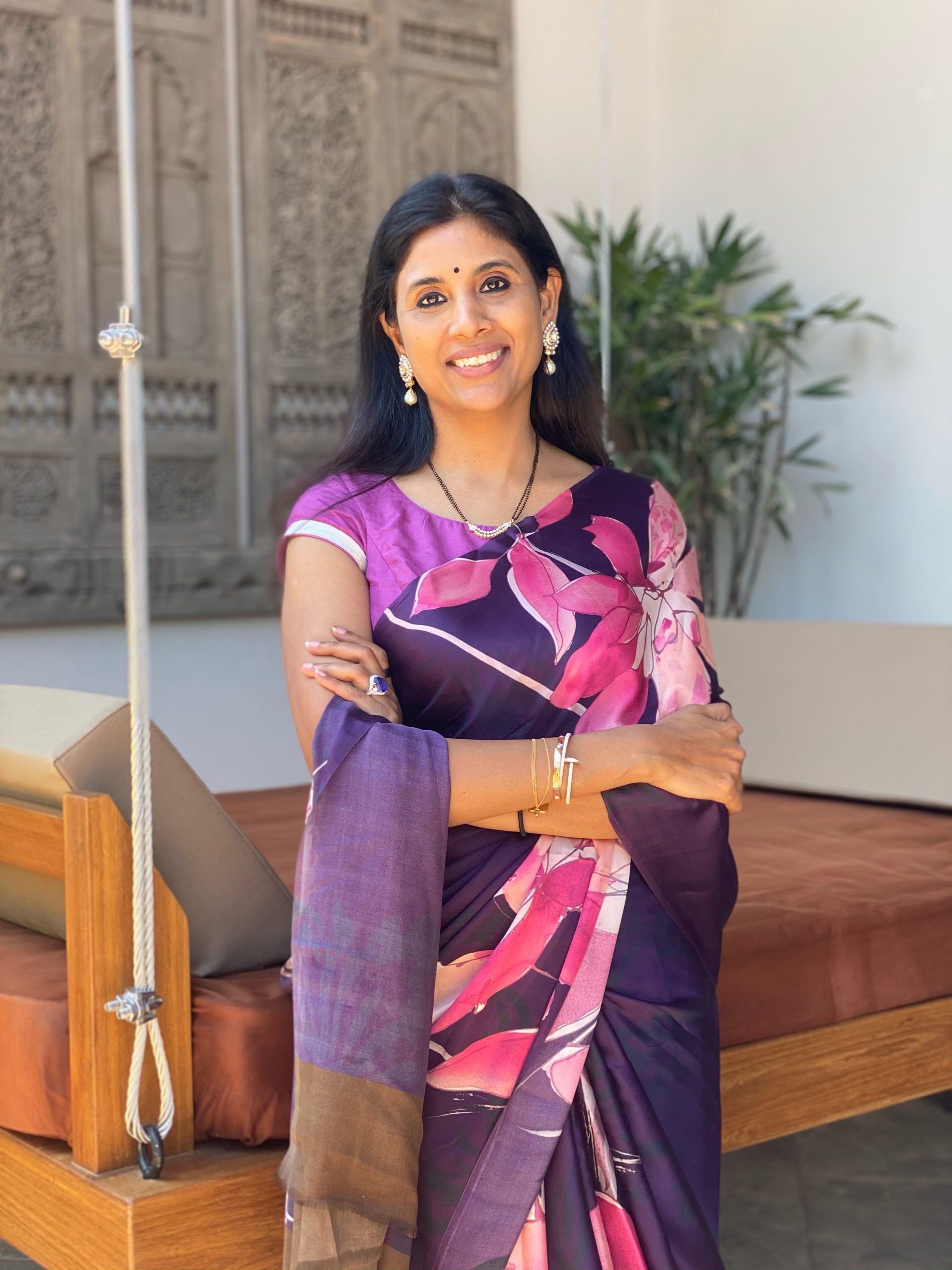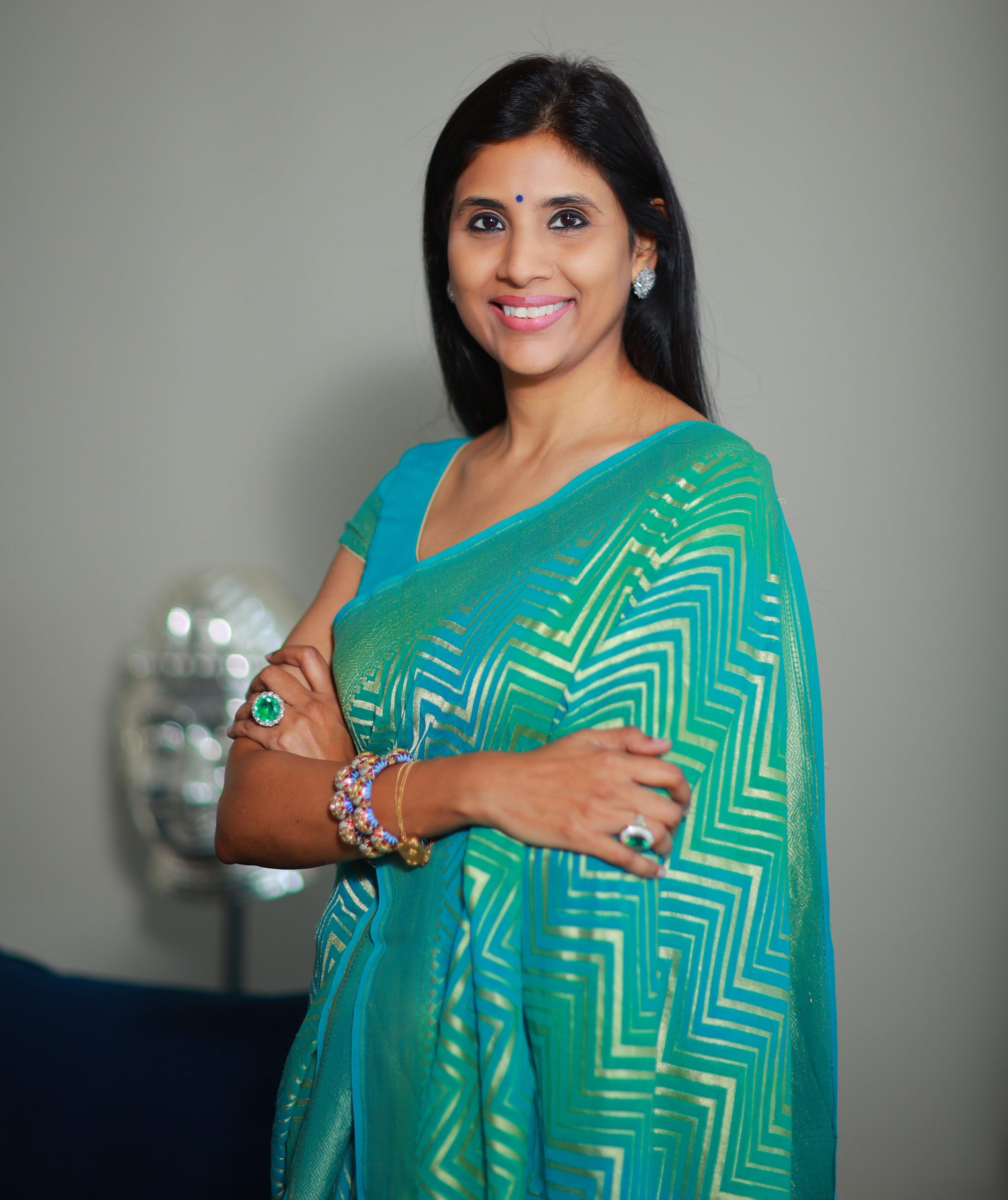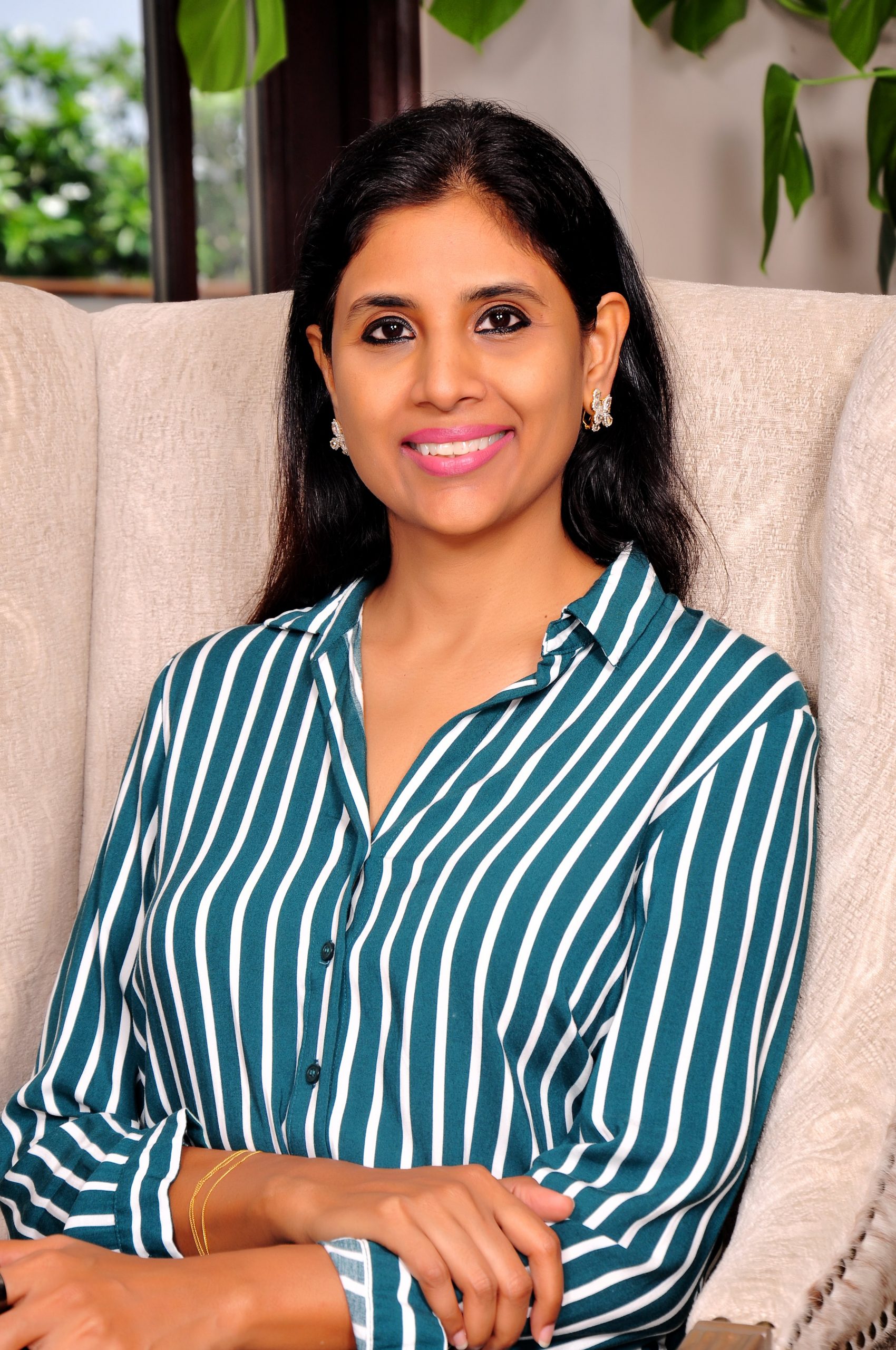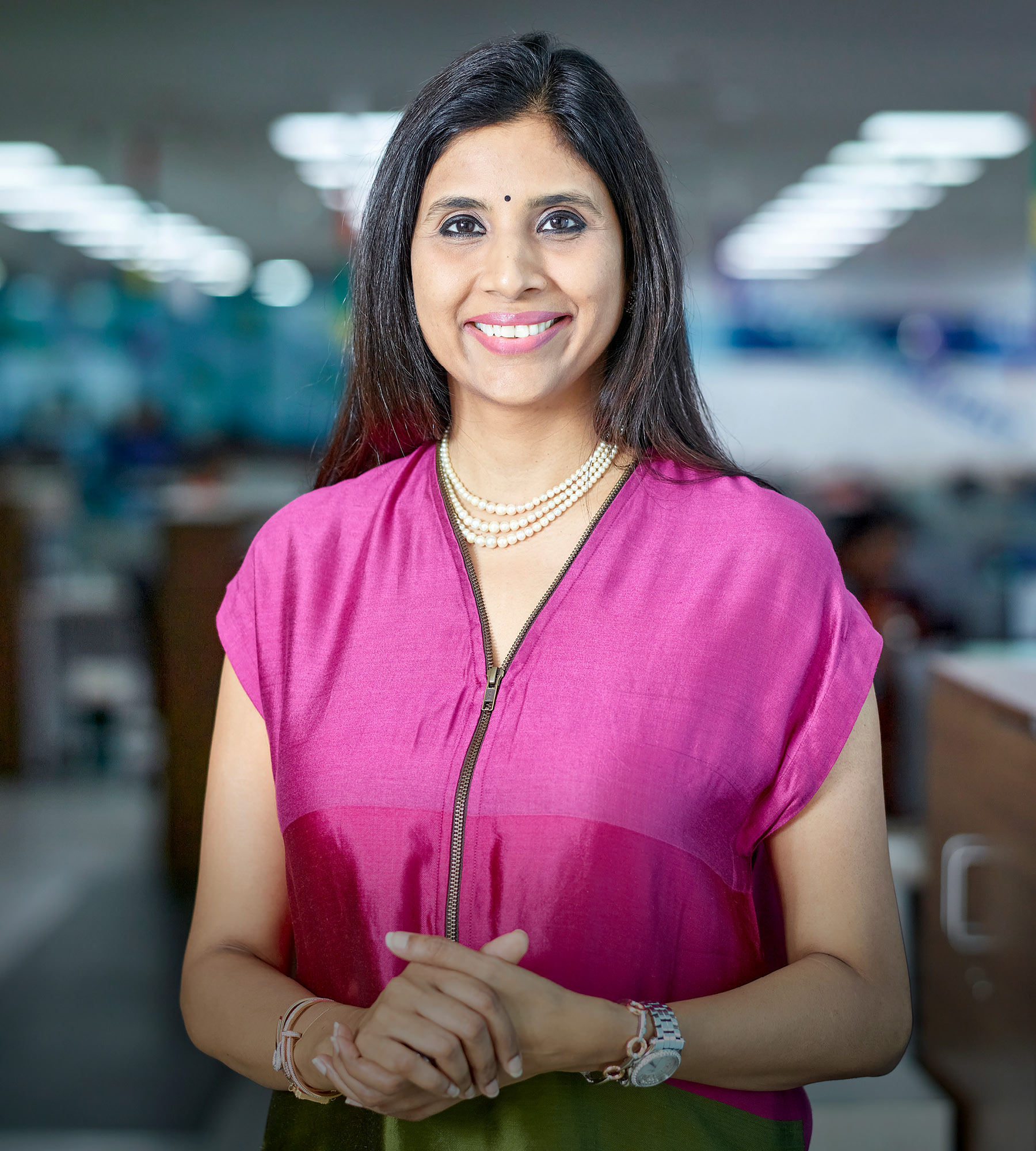Language
You can read the magazine in one of the following languages
The concept of work–life balance is overrated, according to Sushma Boppana. “My work–life balance is actually quite bad, but I’m OK with that,” she tells The CEO Magazine.
Fortunately, she works in the family business, “so they also understand the pressures”.
The family business is Sri Chaitanya Educational Institutions, founded by her parents, BS Rao and Jhansi Lakshmi Bai, 36 years ago. After nearly two decades practicing medicine in the United Kingdom and Iran, the couple returned to India with a vision: to build a school that would provide girls from rural Andhra Pradesh access to professional education. In 1986, Sri Chaitanya Girls Junior College opened its doors.
Today, Sri Chaitanya is one of the country’s leading educational institutions with over 750,000 students in more than 700 schools across over 250 cities in 26 states. Boppana sits on the management team as CEO and Academic Director.
“If there is a student who wants to learn and do well, we want to be there to support them. It’s a value we live by.”
“My parents, especially my father, always said that along with health, education is very personal to everyone and as such should be run by people who are very passionate about it and who want to put it first as both are life-deciding in different scenarios,” Boppana says.
“It’s not a responsibility you can take lightly. You might not be able to justify 100 percent of your time all the time, but you have to do your best and keep it your first priority.”
After all, like her parents’ first career choice – medicine – education is highly personalized with a lot of human interactions and emotions. “That has to be taken very seriously,” she continues.
Boppana says her family shares a relentless commitment to the Sri Chaitanya founding vision. “We want to reach out and make education very affordable to children who are in any nook and corner of the country,” she explains.
“A lot of children have limitations and may be unable to move to a larger town because of their parent’s financial position, a health issue or because they have no support system in place. So our goal is quite simple. If there is a student who wants to learn and do well, we want to be there to support them. It’s a value we live by.”
In its founding year, with a class of 87 girls at Sri Chaitanya Girls Junior College, the focus was on preparing higher secondary (11th and 12th grade) students for local and state-level competitive medical and engineering exams. On the back of early successes, a boy’s junior college was opened in Hyderabad in 1991, followed not long after by others in United Andhra Pradesh.
By the time Boppana joined her parents in the organization in 2006, Sri Chaitanya had already established a robust academic reputation. There were, however, pockets of opportunity she knew she wanted to pursue.
“We were doing very well in the state-level engineering exams, but we were still working towards competitive national examinations such as the IIT,” she explains, referring to the Joint Entrance Examination – an engineering admissions test for one of 23 Indian Institutes of Technology (IIT).
As a graduate of the national system herself, having studied computer science at the Birla Institute of Technology and Science, Pilani, she understood the importance of access to such opportunities.
“I have always felt that going out of state to a national university adds a lot of value, exposure and expertise to the students because of the mix of people, faculty and cultures they encounter,” she says.
“It’s not just about the academic transition, but also the cultural transition for them to do better. They are away from home and out of their comfort zone, perhaps even in a state that speaks another language.”
So, rather than confine students to their state-level tertiary institutions, the family decided to focus on nationwide entrance exams; whether the All India Institute of Medical Sciences and the Jawaharlal Institute Postgraduate Medical Education & Research for medical students, or the IIT or National Institute of Technology (NIT) for engineering.
“That was a huge pivot for us, a huge turning point,” she recalls.
The biggest change was the need to write one integrated curriculum that covered all relevant examinations, whether at the board, state or national level.

“We demonstrated that the exams were not as difficult or as complex as they seemed. That every student had an opportunity to succeed if they prepared in a certain way.”
“It was a move that brought a huge value add as no one had done anything like it at the time,” she explains. “If you looked around the country, everyone was training students for a certain sector only; not for any competitive exam like us.”
Boppana describes what followed as a ‘revolution’. “We were able to attract a lot of students from rural areas, small villages and small towns, who aspired to do well and follow a path in medicine or engineering,” she says. “We were able to showcase exactly what was needed to prepare for these exams.”
The new curriculum, as taught by the Sri Chaitanya educators, also demystified the process. “We demonstrated that the exams were not as difficult or as complex as they seemed. That every student had an opportunity to succeed if they prepared in a certain way, if they followed this curriculum, focused on these areas and worked more on fundamentals and concepts rather than rote learning.”
Speaking about her own educational journey, Boppana, who studied for her Masters in IT in the United States before staying on for a further eight years to work in the industry, says that her time overseas helped her in a variety of ways. “It gave me independence and helped me understand the freedom in education that certain other countries have,” she says.
Reflecting on the pressure for students in India to decide by the end of 10th grade what their future path will be, she says she realized in her post-graduate studies that she didn’t actually enjoy computer sciences. “I am more a people person. I like interacting, I like leadership positions rather than hardware roles,” she says.
After a year of working in coding, she switched to a product management-focused position. “That taught me about research, about customer and team liaison, about delivering to deadlines and about working with cross-cultural teams and motivating them,” she says.
She became aware of other key learnings, too. “The customer is the central point and any business has to work to serve the customer while retaining their core values and beliefs,” she says.

“I am more a people person. I like interacting, I like leadership positions rather than hardware roles.”
On a personal level, she says that the United States taught her to be humble. “Whatever background you come from, whatever you do, the structural system there with its quarterly appraisals shows you what you’re good at, what you’re not so good at, how to improve and what you should focus on,” she says.
“For me, I think the whole journey makes you more realistic in terms of what you can achieve and what you need to delegate because we don’t all come with the same skill set.”
She drew upon these lessons when she returned to India “with the confidence to manage the large institution Sri Chaitanya had become,” she says. Particularly as a woman leading a senior faculty, mainly made up of male staff. “The experience has definitely given me the confidence to make sure they respect me because, without that, nothing works,” she says.
Today she is a passionate advocate for more women in senior education roles. “We can add so much value, particularly in terms of skill sets that are underrated,” she says. “We’re very observant, we’re very focused, we can multitask and we take responsibility very seriously.”

“We believe that the student comes first, and whatever we do should be student-centered. Whatever changes we make, initiatives we take, targets we set in every branch, if it doesn’t benefit the student, help them do better, then we shouldn’t do it,” she explains.
Another key differentiator lies in its curriculum. “It might be easy to set a curriculum, and sent it across our network, but it’s not so easy to implement it in every school,” she says.
At the same time as this integrated curriculum was introduced, another pivotal transformation was taking place. “If you remember, 15-to-20 years ago, students would go to school and then tuition in the evening,” Boppana says.
“But my parents, who are such a huge asset because they come with so much experience, made it possible for students to stay back in school and study in the presence of teachers, which was non-existent at the time.”
“For them, it was critical that students had the opportunity to stay back after school for a couple of hours in the presence of teachers, to complete their work, ask their questions and clarify anything they needed to. After that, they could go home to their other activities.”
The shift was particularly pertinent for students in the higher levels, at a stage of their education journey when parents are less likely to be able to help them with specialty subject matters and, as such, engage specialist tutors. “But often the level of teaching with tutors is inferior to the classroom,” she says.

“Whatever changes we make, initiatives we take, targets we set in every branch, if it doesn’t benefit the student, help them do better, then we shouldn’t do it.”
This way, students were now able to access all the support they needed in school. “Combined with the integrated curriculum we were offering at that time, as well as our testing methodology, we were able to inspire a lot of students to join our program,” she says.
Most crucially, the organization reduced stress levels for students. Boppana calls this “the turning point for any child”. “That’s where they decide what they want to do and where they want to go to college,” she explains. “Those choices decide the career opportunities that follow.”
Success was immediate. “In Andhra Pradesh, the number of children going out of state into national level engineering and medical colleges quadrupled,” she says. And the results also served as a boost within Sri Chaitanya, especially after the first batch of students found excellent job opportunities upon graduation.
“That gave everyone a lot of confidence, from teachers to administrators to parents,” she says.
But there’s always room for improvement, especially in education, and Boppana explains that other problems were soon spotted. “Since we were only teaching higher secondary, when students came to us from other schools for grade 11, we were struggling to achieve uniformity because they all came with different backgrounds,” she says.
For instance, one student may have come from a school with strengths in physics, and another in math or biology. “But there were always areas where the students hadn’t done well,” she says, and that was something that added to their stress levels.
“Even if the student had potential, because of the backlogs they may have had from their middle or secondary school years, we were struggling to train those students within a three-year time frame, especially for exams that are rote to test concepts and problem-solving, rather than simply rote repetition.”
The solution? Expand the Sri Chaitanya to cater from kindergarten to 10th grade as well. “For us, if we started schools, we knew that we would at least be able to expose a certain percentage of students to what an objective pattern of exam is by the time they arrive in 11th grade,” she says, adding that until 10th grade, exams are multiple choice.
“There isn’t a choice in these competitive exams,” she continues. “In one minute, they have to be able to answer a question, which can be quite challenging for students who are slow thinkers and who haven’t had much practice in it.”

“We take pride in teaching students to survive and grow as individuals in a positive environment and to keep learning, rather than feeling satisfied with themselves at any point in time.”
By opening its schools to all grades, Boppana explains that her family and their teaching team wanted to be able to slowly ensure that students learned these skills from as early as seventh grade, becoming stronger as they progressed.
“We wanted to train them for Olympiad in math and National Talent Search Examination in various subjects, national level competitive exams to allow them to understand the system and gain more confidence in their ability to compete at a national level.”
Boppana is firm in the belief that, as educators, it’s the school’s role to develop both student and parent exposure to the competitions, the opportunities and the skill sets needed to be able to compete in the world.
And, as Sri Chaitanya started expanding its schools in 11th and 12th grades throughout other states, she explains that they soon possessed enough data to provide students across India a comparative analysis of where they stood within the Sri Chaitanya network.
“It’s all about competition,” she says. “We take pride in teaching students to survive and grow as individuals in a positive environment and to keep learning, rather than feeling satisfied with themselves at any point in time. Yes, they should be happy with where they are, but they should keep on learning to try and improve themselves one or two percent at a time.”
Like educational institutions across the world, the last few years have posed a unique set of challenges with the establishment of virtual classrooms overnight. “The COVID-19 pandemic has definitely given us a lot of new insights into education,” she says. “Within 24 hours, all our students were logging in on Zoom and taking online classrooms. Assignments were given online, as were any clarifications and counseling.”
The situation had its pros and cons, she says. “Over the last two years, while on this journey, we’ve realized that 100 percent online doesn’t work for most students, maybe only for the very few who have a lot of interest in technology and are motivated and focused.”
It wasn’t only the students struggling to adapt to the new normal. “It was a huge learning for teachers as well, as they battled to retain the students’ attention and ensure that they completed their homework.”
The level of work suffered as well when compared to a classroom program. “Students just listened to the classes and then logged off to spend time with family or do other activities at home,” she says. “That brought down the efficiency for every student and teacher. It made us realise that a hybrid education was preferable to a purely online or offline program.”

“The COVID-19 pandemic has definitely given us a lot of new insights into education.”
Armed with this knowledge, Boppana and her colleagues set to work to devise a platform that could support students on both avenues; a project that drew upon her computer science background.
As they discussed ideas, she realized that something else was bothering her, too. “Within Sri Chaitanya at least, our students have a strong curriculum taught by strong teachers in a school that is financially strong enough to shift from offline to online immediately and provide everything they need,” she says.
“But if you look around the country, and even within Sri Chaitanya, there are students who come from very modest backgrounds, villages or small towns that don’t have wi-fi, and they were joining their classes using their phones.”
A percentage of those students — 18 percent, she says — didn’t even have smartphones. “It was very tough for kids,” she continues.

Often, the topic of discussion with her academic staff is exam performance. “We have this system, where any kind of exam, even a weekend exam or practice testing sets for students, within 24 hours we have made a comparative analysis. So we compare by total, we compare by subject, we compare the question to see which branch did well, which branch did not do well, which student did well, which student could not do well.
“I spend a lot of time going through those and talking to branches, talking to teachers to understand why they did well or why they didn’t do well, because, either way, that information is very powerful.”
Boppana began to grasp just how many students in India were suffering during the pandemic because there lacked a proper student-centric platform that was focused more on engagement and outcomes than numbers.
“And we thought since we can do this in brick and mortar, why couldn’t we try to replicate the same online to benefit students around the country, even students who are not enrolled at Sri Chaitanya,” she explains.
From this train of thinking, Infinity Learn was born – a platform that allows students who are not part of Sri Chaitanya’s physical branches to join in and listen to its expert teachers, follow its curriculum and sit its exams for an all-India ranking with an in-depth analysis.

“We believe catching a student early will make their journey stronger and build a robust learning foundation.”
Infinity Learn also brought benefits to existing students, too. “Our own students were a motivation for me to start this because it allows them to work in a structured environment even for the two hours after school, without having to go to tuition,” she says.
All homework is now accessed via the platform, which is also corrected via this medium. “And our teachers can review everything in the classroom the next day,” she explains.
“There are a lot of similar features, which actually enable the students to develop a supportive mechanism at home once they get home. So, for both offline and online students, we want to develop Infinity Learn as a go-to solution to ensure that they are ready for competitive exams.
“And we want to replicate our brick and mortar level of engagement and outcomes using Infinity Learn.”
Now, bolstered by this online channel, Boppana explains that the business has plans for even more expansion over the next three-to-five years. “We believe catching a student early will make their journey stronger and build a robust learning foundation,” she says.
Right now, work is underway to introduce Sri Chaitanya into new states across India. By 2025, she hopes an extra 300 schools will have been opened. “Our aspiration is to reach around 10 lakh [1,000,000] students through 1,000 schools,” she says, and is aiming for similar student figures with Infinity Learn.

“The greater the number and variety of students we cater to, the more we refine our curriculum to match the needs of any student in the country.”
Despite the challenges involved in opening new brick-and-mortar centers, such as finding the right infrastructure, Boppana says that it’s a process she finds very rewarding. “It’s always a pleasure to start new schools and go into new cities and states because that will give us a lot of exposure and confidence,” she says.
And, even as educators, it’s also an opportunity to learn. “Our curriculum team is always learning from new branches with their new sets of parents and students. It’s an evolution,” she explains. “The greater the number and variety of students we cater to, the more we refine our curriculum to match the needs of any student in the country.”
With expansion plans comes a need for new staff: both teachers and administrators, who play a “huge role in how we make sure students and teachers work together”.

“I feel that if one woman does well, another 10 women and 20 students will benefit from it.”
“That has always been our skill set,” she explains. “As an organization, we are very administrative-driven to train and help teachers, students and parents coordinate with each other and do well.”
The organization is busy training up new principals and administrators for its new schools across the country. “Training is a critical process because without that, it will be very tough implementing what we have in mind as we all need to believe in the same vision,” she says.
And, in a digital world full of distractions and never-before-seen opportunities, these are qualities that help bring clarity to young students. “I feel that if one woman does well, another 10 women and 20 students will benefit from it.”
